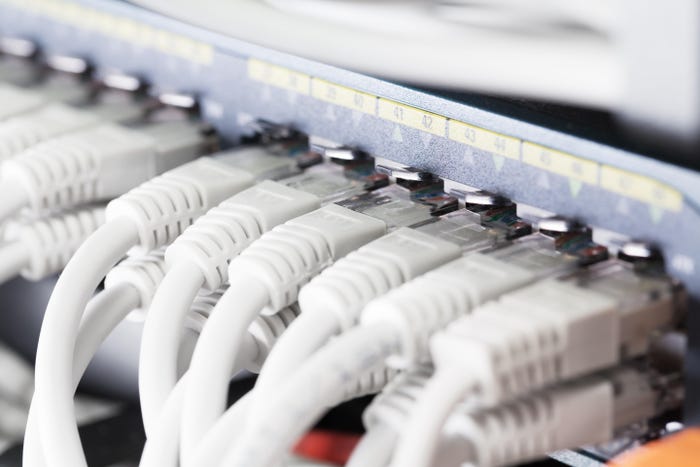Broadband Over Power Lines Gets Ready For Prime Time
Internet services delivered by power utilities will bring much-needed competition to the networking business, and connectivity to subscribers left out of the broadband revolution.
June 9, 2005

The promise of Broadband over Power Lines (BPL) is just too compelling to ignore: Internet services delivered by power utilities, bringing much-needed competition to the networking business, and connectivity to subscribers left out of the broadband revolution. And, with the Federal Communications Commission's approval of Internet power-line delivery last fall and a real product announced by Motorola last month, BPL seems ready for prime time.
Jim Valle, CEO of the BPL consulting firm Fiber Bridge Communications says the technology can be seen as "the third leg of a three-legged stool. It solves the unbundling issue with a commercial, rather than the regulatory solution of open access regulations," he says. "When you bring in BPL, it opens up the last mile to other carriers."
That's good news for a broadband-hungry market like the U.S. According to Valle, the last eighteen months have seen a veritable surge in BPL development, with pilot projects in Virginia and Missouri, and a slow, but enthusiastic early adoption curve. "In the last six months, the second generation of BPL has come out," Valle says. "Now it's starting to take off."
BPL has had something of a checkered history, and despite all the recent interest, it isn't exactly new technology. Valle notes that electrical utilities have been using the power grid to carry communications for decades. It has been used to transmit data from household consumption meters and to signal line problems. The difference is that these have been narrowband connections, used solely by the power companies themselves for system management.
Nortel and United Utilities developed a short-lived consumer data over power lines technology dubbed Norweb in the 1990s, but with persistent radio interference issues, they pulled the plug on it in 1999, citing low market potential. Nortel preferred to concentrate on broadband data development for more traditional carrier technologies.
Nevertheless, even with the renewed momentum of the last six moths, BPL still has a number of obstacle to overcome before it's ready for prime time, and it's not even clear whether it will become really common in North America. The main limitation in the U.S. is transformer density -- the number of homes or power users connected to each power transformer."The grid itself represents a challenge," Valle says. "Transformer density averages six homes off a low voltage transformer. You can't cross over a transformer, so in the U.S., you'd need a head end device for every six homes."
Still, BPL could be a key technology in areas that have high transformer densities and a poor, or non-existent telecommunications infrastructure. It could be just the thing to bring high speed networking to countries like Malaysia, which has an average density of 250 subscribers per transformer and remote communities in the U.S. that are plugged into the grid, but whose telephone and cable lines are just too far from their telcos' central offices to receive traditional broadband service.
Indeed, much of the excitement around the technology is located in Europe and Asia. A country like Germany, with a surprisingly low rate of broadband penetration and a relatively high transformer density, could be an ideal candidate for BPL, Jupiter Research analyst Joe Laszlo says. The key there will be the potential for grafting data communications onto the power grid. "Definitely, from what I've heard, the power infrastructure in other countries is more easily upgraded," he says.
Perhaps more promising is a hybrid BPL network, says Laszlo. "You can use the power grid to go part of the way, and use Wi-Fi to reach the neighborhood instead of running a connection from the transformer to each home," he says. "If BPL is going to be viable, it's going to have to be in some kind of hybrid arrangement."
Motorola's announcement of a wireless BPL solution last month, combining its Canopy broadband Internet solution with a low-voltage power line technology, is the proof of this, according to Laszlo. "Motorola is probably thinking that neither Canopy nor BPL alone are viable," he says. "But together, they might have something compelling."Both Valle and Laszlo doubt whether BPL will do much to bring a third major player, alongside telecommunications carriers and cable operators, into the broadband market, but it does promise to extend high-speed networking into markets that are still out of the broadband loop. "There are two small BPL trials going on right now, and they both very limited," Laszlo says. "BPL's future will probably be a lot like that: It won't be the big utilities, but the small power companies that know their markets intimately and aren't competing against cable companies and telecommunications carriers."
You May Also Like
2024 InformationWeek US IT Salary Report
Aug 15, 20242022 State of ITOps and SecOps
Jun 21, 2022


